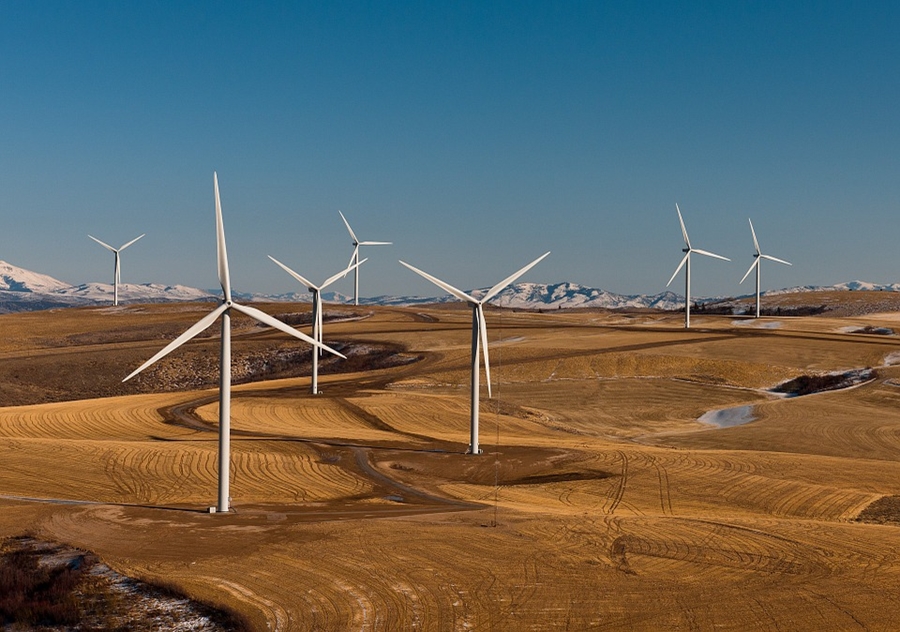Study Demonstrates a Better way to Store Renewable Energy
FAYETTEVILLE, Ark. – In an effort to find better ways to store renewable energy, physicists at the University of Arkansas, in collaboration with a scientist at the Luxembourg Institute of Science and Technology, have shown that antiferroelectrics can provide high energy density. The findings may lead to storage devices that improve the efficiency of wind and solar power.
Because the production of renewable electricity may fluctuate from second to second, any device designed to store it must cope with constantly changing loads and still achieve high energy density relative to size. Batteries, supercapacitors and other technologies that can achieve high densities typically cannot react quickly enough to changing conditions. Traditional electrostatic capacitors can react quickly, but can’t hold enough energy for large-scale use.
U of A researchers Bin Xu, a research associate in the Department of Physics, and Laurent Bellaiche, Distinguished Professor of physics, along with Jorge Íñiguez at LIST, showed that antiferroelectrics may be able to achieve both goals. They published their findings in May in the journal Nature Communications.
Antiferroelectrics are materials in which adjacent dipoles – positive and negative charge centers separated by a very small space – are ordered in opposite direction of one another. Ferroelectric materials, by contrast, have adjacent dipoles ordered in the same direction.
Antiferroelectrics become ferroelectric with the application of a high enough electric field. By exploiting this characteristic, researchers predicted that high energy density and efficiency can be achieved in antiferroelectrics, in particular with the rare-earth substituted bismuth ferrite material used in this study. The paper explored improving the storage performance with further manipulation of the electric field. They were also able to create a model that explains the connection between energy density and the electric field, which points toward further research in the future.
Contacts
Bin Xu, research associate
Department of Physics
479-575-2506,
binxu@uark.edu
Headlines
Department of Transportation Grant of $548,492 Aims to Revitalize Pine Bluff
A project team co-led by the U of A Community Design Center and Go Forward Pine Bluff has been awarded a $548,492 grant from the U.S. Department of Transportation.
Kvamme Retires After Two Decades of Supporting Environmental Dynamics; Reception Thursday
A retirement reception will be held from 2-3 p.m. Thursday in the Graduate Lounge of Gearhart Hall, celebrating her longstanding career as recruiter, greeter, cheerleader, fixer, facilitator and more.
Leader of Entrepreneurial Internship Program Awarded DEI Fellowship
Jason Riley, the program manager for Venture Internships at the U of A Office of Entrepreneurship and Innovation, was one of two people awarded a CEIA's Diversity, Equity and Inclusion Fellowship.
Days for Girls Workshop: Earth Week Theme Plus Succulents
Days for Girls at the U of A invites students to attend a workshop to make sustainable menstrual health kits for underserved communities from 6-7:30 p.m. Tuesday, April 23, in Kimpel Hall classroom 0314.
College of Education and Health Professions Names Superior Staff Service Award Winners
Kay Brusca, Kirsten Christian, Anaid Espinosa, Andrea Howard and Brandi Maples were named winners of the 2023-24 "Superior Staff Service Awards."





